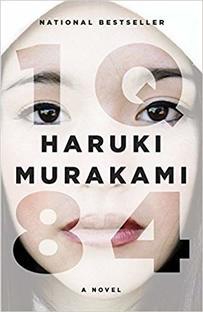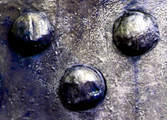Nathaniel Henderson's Blog, page 3
December 18, 2018
Throw Myself Screaming into Action: How I Got Here
I went through several openings for this post, and couldn’t settle on any of them…
Fear of failure is one mean bastard. It’s not a weight you can simply chuck into the abyss and be done with. It’s got the tenacity of those creepy dolls from horror movies that keep coming back no matter how many times you burn them on a pile of angel hair.
Brilliant ideas never rust if you don’t get them wet.
Planning is awesome right up until it’s burying your corpse in the backyard under so many good intentions.
…And I noticed I was stalling by trying to come up with a poetic way to describe stalling. No more. I’m strapped into a giant slingshot; time to stop cranking it back and just—Rewind to 2005. I was taking a screenplay writing course at the Academy of Art University, ...
... a side quest to my ultimate goal of becoming a master visual effects and 3D animation artist. Our assignment: write a 10 page screenplay treatment.
During my search for inspiration, I stumbled upon a short story by a Japanese author. In it, a housewife hires a private investigator to find her husband. The twist: he went missing on his way to his mother’s apartment three floors above. No eyes—human or camera—saw him leave the building.
 The PI is stumped. Weird events ensue. I vaguely recall a creepy little girl (because of course) in a stairwell and a portal to another dimension.
The PI is stumped. Weird events ensue. I vaguely recall a creepy little girl (because of course) in a stairwell and a portal to another dimension.
(I remember neither the author’s name nor the magazine it appeared in, but if this sparks a memory, please let me know in the comments.)
Enigmatic and disquieting, the story provided more than enough fodder to hash out those 10 pages. I received good feedback from the teacher, put more flesh on its bones and ... nothing. Life went on. For six months. That’s a long time when you’re 22.
But the story wouldn’t leave me alone. It watched me from the computer lab shadows. Followed me down Post Street and past Divas to my 2am gym sessions. Its presence was amplified by my growing awareness of all things Japanese, sparked by friends and the culture stew that is San Francisco.
 To appease my creative demons, I wrote a book, The Happy Home Death Machine, about a Tokyo-based PI. The awkward title was a reference to “Janglish”—Japanese English—found on everything from diapers to billboards in Japan. I realized I very much liked my demons; they flogged me into forward motion.
To appease my creative demons, I wrote a book, The Happy Home Death Machine, about a Tokyo-based PI. The awkward title was a reference to “Janglish”—Japanese English—found on everything from diapers to billboards in Japan. I realized I very much liked my demons; they flogged me into forward motion.
I graduated from AAU and moved to South Korea to teach English—
Wait, I skipped something: the career in 3D animation.
I began with great passion ... and unrealistic expectations. As I clicked my way through thousands and thousands of frames, adjusting control arms, deformation, and timing, I came to realize, painfully, that my love of the end product did not extend to the process.
Animation, like all jobs, has its moments of slog. The surrounding bureaucracy also takes more than a few pounds of flesh. Movie/game release dates are nearly impossible to change, so deadlines must be met, whatever the cost to artists’ evening plans. Clients, even well-meaning ones, are sometimes not versed in how the technology works or what it’s capable of, so their requests can be vague to the point of abstraction. Budgets and plans change, casting aside hours of completed product. And on and on into the void.
 A club I modeled, textured, and lighted for an AAU class. Primarily done in Maya.But when it all works out, and a vision comes to life, the results are oh so beautiful. Worth all the sweat and tears and caffeine-induced shakes. Some of my former classmates have gone on to help bring major productions to life. While I envy them for that, I don’t regret going in a different direction.
A club I modeled, textured, and lighted for an AAU class. Primarily done in Maya.But when it all works out, and a vision comes to life, the results are oh so beautiful. Worth all the sweat and tears and caffeine-induced shakes. Some of my former classmates have gone on to help bring major productions to life. While I envy them for that, I don’t regret going in a different direction.
Back to that different direction.
I started writing the sequel to Happy Home in South Korea, titled Fluffy Bunny Kill Force , and finished it shortly after relocating to Tokyo. This book sees my heroines tackle the underbelly of the Japanese music industry and their pop idol assembly lines.
It took me 4 years to write the 2 books. As of now, maybe 50 people have read them. Not entirely the books’ fault. My “marketing strategy” consisted of my parents telling their friends, and me working it into conversations with cute girls: “Hey, I’m writer ... No, sorry, they’re not translated into Korean.”
The Quoddy Tides, a local newspaper in Maine, did review The Happy Home Death Machine , comparing it (very lightly) to The Girl with the Dragon Tattoo. I still do a little dance over that coup. You can read it here. Pro tip: savor every victory, no matter how small it is, or how big you get.
I moved to Tokyo in 2011 ...... and promptly lost motivation to continue the PI series for the dumbest of reasons: I was now living in the very place I’d set the books. It was no longer exotic. The image of Japanese office workers in their near-obligatory white shirt/black slacks combo smothered fantasies of tattooed gangsters and talking vending machines (of which there are both, just not ubiquitous).
This was my failing, not Japan’s. In fact, the longer I live here the more I realize how much deeper, richer, and more multifaceted this country is than my imagination could ever hope to render.
 These are all pictures I took within the first few years of moving to Tokyo.But it was too late. By the time I’d had this epiphany, I’d already moved my mind to a new city, one of my own creation: the city-sphere of Naion.
These are all pictures I took within the first few years of moving to Tokyo.But it was too late. By the time I’d had this epiphany, I’d already moved my mind to a new city, one of my own creation: the city-sphere of Naion.
In a way, it is Tokyo. It is Hong Kong, it is Istanbul and Brussels. Strained through a cybernetic fever dream. My playground, a character in its own right. A place which has seeded an entire series.
Come on in. Don’t mind the smell of burning ozone and street food, you’ll learn to love it. For your safety and enjoyment, keep your eyes open.

Fear of failure is one mean bastard. It’s not a weight you can simply chuck into the abyss and be done with. It’s got the tenacity of those creepy dolls from horror movies that keep coming back no matter how many times you burn them on a pile of angel hair.
Brilliant ideas never rust if you don’t get them wet.
Planning is awesome right up until it’s burying your corpse in the backyard under so many good intentions.
…And I noticed I was stalling by trying to come up with a poetic way to describe stalling. No more. I’m strapped into a giant slingshot; time to stop cranking it back and just—Rewind to 2005. I was taking a screenplay writing course at the Academy of Art University, ...
... a side quest to my ultimate goal of becoming a master visual effects and 3D animation artist. Our assignment: write a 10 page screenplay treatment.
During my search for inspiration, I stumbled upon a short story by a Japanese author. In it, a housewife hires a private investigator to find her husband. The twist: he went missing on his way to his mother’s apartment three floors above. No eyes—human or camera—saw him leave the building.
 The PI is stumped. Weird events ensue. I vaguely recall a creepy little girl (because of course) in a stairwell and a portal to another dimension.
The PI is stumped. Weird events ensue. I vaguely recall a creepy little girl (because of course) in a stairwell and a portal to another dimension.(I remember neither the author’s name nor the magazine it appeared in, but if this sparks a memory, please let me know in the comments.)
Enigmatic and disquieting, the story provided more than enough fodder to hash out those 10 pages. I received good feedback from the teacher, put more flesh on its bones and ... nothing. Life went on. For six months. That’s a long time when you’re 22.
But the story wouldn’t leave me alone. It watched me from the computer lab shadows. Followed me down Post Street and past Divas to my 2am gym sessions. Its presence was amplified by my growing awareness of all things Japanese, sparked by friends and the culture stew that is San Francisco.
 To appease my creative demons, I wrote a book, The Happy Home Death Machine, about a Tokyo-based PI. The awkward title was a reference to “Janglish”—Japanese English—found on everything from diapers to billboards in Japan. I realized I very much liked my demons; they flogged me into forward motion.
To appease my creative demons, I wrote a book, The Happy Home Death Machine, about a Tokyo-based PI. The awkward title was a reference to “Janglish”—Japanese English—found on everything from diapers to billboards in Japan. I realized I very much liked my demons; they flogged me into forward motion.I graduated from AAU and moved to South Korea to teach English—
Wait, I skipped something: the career in 3D animation.
I began with great passion ... and unrealistic expectations. As I clicked my way through thousands and thousands of frames, adjusting control arms, deformation, and timing, I came to realize, painfully, that my love of the end product did not extend to the process.
Animation, like all jobs, has its moments of slog. The surrounding bureaucracy also takes more than a few pounds of flesh. Movie/game release dates are nearly impossible to change, so deadlines must be met, whatever the cost to artists’ evening plans. Clients, even well-meaning ones, are sometimes not versed in how the technology works or what it’s capable of, so their requests can be vague to the point of abstraction. Budgets and plans change, casting aside hours of completed product. And on and on into the void.
 A club I modeled, textured, and lighted for an AAU class. Primarily done in Maya.But when it all works out, and a vision comes to life, the results are oh so beautiful. Worth all the sweat and tears and caffeine-induced shakes. Some of my former classmates have gone on to help bring major productions to life. While I envy them for that, I don’t regret going in a different direction.
A club I modeled, textured, and lighted for an AAU class. Primarily done in Maya.But when it all works out, and a vision comes to life, the results are oh so beautiful. Worth all the sweat and tears and caffeine-induced shakes. Some of my former classmates have gone on to help bring major productions to life. While I envy them for that, I don’t regret going in a different direction.Back to that different direction.
I started writing the sequel to Happy Home in South Korea, titled Fluffy Bunny Kill Force , and finished it shortly after relocating to Tokyo. This book sees my heroines tackle the underbelly of the Japanese music industry and their pop idol assembly lines.
It took me 4 years to write the 2 books. As of now, maybe 50 people have read them. Not entirely the books’ fault. My “marketing strategy” consisted of my parents telling their friends, and me working it into conversations with cute girls: “Hey, I’m writer ... No, sorry, they’re not translated into Korean.”
The Quoddy Tides, a local newspaper in Maine, did review The Happy Home Death Machine , comparing it (very lightly) to The Girl with the Dragon Tattoo. I still do a little dance over that coup. You can read it here. Pro tip: savor every victory, no matter how small it is, or how big you get.
I moved to Tokyo in 2011 ...... and promptly lost motivation to continue the PI series for the dumbest of reasons: I was now living in the very place I’d set the books. It was no longer exotic. The image of Japanese office workers in their near-obligatory white shirt/black slacks combo smothered fantasies of tattooed gangsters and talking vending machines (of which there are both, just not ubiquitous).
This was my failing, not Japan’s. In fact, the longer I live here the more I realize how much deeper, richer, and more multifaceted this country is than my imagination could ever hope to render.
 These are all pictures I took within the first few years of moving to Tokyo.But it was too late. By the time I’d had this epiphany, I’d already moved my mind to a new city, one of my own creation: the city-sphere of Naion.
These are all pictures I took within the first few years of moving to Tokyo.But it was too late. By the time I’d had this epiphany, I’d already moved my mind to a new city, one of my own creation: the city-sphere of Naion.In a way, it is Tokyo. It is Hong Kong, it is Istanbul and Brussels. Strained through a cybernetic fever dream. My playground, a character in its own right. A place which has seeded an entire series.
Come on in. Don’t mind the smell of burning ozone and street food, you’ll learn to love it. For your safety and enjoyment, keep your eyes open.

Published on December 18, 2018 00:13
November 26, 2018
The Whole Animal: Review of Murakami's 1Q84
 1Q84 fascinates--and overflows--with a mass of brocaded elements.
1Q84 fascinates--and overflows--with a mass of brocaded elements.An assassin and a struggling writer navigate the alternate, off-kilter world of not-1984 while dodging cult members and learning of the mysterious “little people” who seem to have a hand in all of it. Along the way life happens, full of lost love, self-discovery, and layers of existential angst. But this is just the skin.
1Q84 is the whole animal.
While most writers try to extract the tastiest pieces from their ideas and cook them into a satisfying meal, Murakami revels in including everything. Along with a buffet of events both wonderful and bizarre, he wants you to root through daily minutia: taking out the garbage, exercising, pining, cooking, banal eroticism and and and...
These "ands" caused my appetite to wane. At times, I had to restrain myself from skipping repetitive descriptions, echoing dialog, and plot tangents to get back to the juicy stuff (of which there is a lot; it’s over 1000 pages).
Some may feel a literary master like Murakami can get away with this because he expatiates on purpose in his unique style, which is both dreamlike and deadpan. For those readers who enjoy making use of every narrative element, boiling them down, curing them, or otherwise doing the work to extract meaning, 1Q84 will captivate. I, however, had trouble digesting it.
In summary, 1Q84 is a weighty story with an interesting through line, but you need to have a lot of patience and a taste for wandering details.
Rating: 3/5 rivets
(4.5/5 for the concepts)
 Final Thought:
Final Thought:At one point, there is an exchange between Aomame, the assassin (for lack of a better term), and her main client’s fixer/bodyguard.
“Have you read it?” (Aomame said.)
“No, I’ve never been in jail, or had to hide out for a long time. Someone once said unless you have those kinds of opportunities, you can’t read the whole of Proust.”
“Do you know anybody who has read the whole thing?”
Which book were they actually talking about? This may be a glimpse of 1Q84’s self-awareness.

Published on November 26, 2018 00:00



